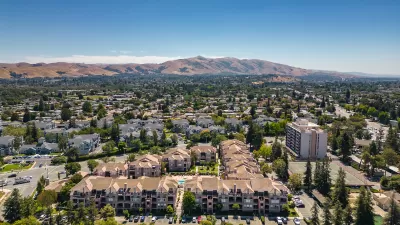As California continues to grapple with staggering housing issues, France's experience offers lessons about the kinds of housing policies and strategies that work.

France could provide a useful example of a way out of the housing crisis that California faces, writes Yonah Freemark. "How were French officials able to do something that has so far eluded California’s leaders? Local, regional, and national leaders worked together to prioritize housing growth."
Freemark points to two factors behind California’s housing problems: inadequate housing production and insufficient support for the state’s poorest residents. France is also struggling with affordable housing issues, he notes, but a slew of reforms has resulted in a significant increase in housing construction in the last few years.
France is funding affordable housing, identifying and using publicly owned land, and implementing zoning regulations that allow for small-scale infill. In addition, municipalities now have to step up rather than impede the development of affordable housing.
"National mandates require 25 percent of housing in every city to be affordable to low- and moderate-income families by 2025. Cities that don’t comply face fines and even the use of eminent domain to make room for affordable development," writes Freemark.
California could take similar steps to address housing and improve the quality of life of residents, says Freemark. "State officials, perhaps inspired by France, must act quickly to fund additional affordable housing and increase construction to make up for a decades-long deficit."
FULL STORY: How the French are fixing a housing crisis comparable to California’s

Planetizen Federal Action Tracker
A weekly monitor of how Trump’s orders and actions are impacting planners and planning in America.

Maui's Vacation Rental Debate Turns Ugly
Verbal attacks, misinformation campaigns and fistfights plague a high-stakes debate to convert thousands of vacation rentals into long-term housing.

Restaurant Patios Were a Pandemic Win — Why Were They so Hard to Keep?
Social distancing requirements and changes in travel patterns prompted cities to pilot new uses for street and sidewalk space. Then it got complicated.

In California Battle of Housing vs. Environment, Housing Just Won
A new state law significantly limits the power of CEQA, an environmental review law that served as a powerful tool for blocking new development.

Boulder Eliminates Parking Minimums Citywide
Officials estimate the cost of building a single underground parking space at up to $100,000.

Orange County, Florida Adopts Largest US “Sprawl Repair” Code
The ‘Orange Code’ seeks to rectify decades of sprawl-inducing, car-oriented development.
Urban Design for Planners 1: Software Tools
This six-course series explores essential urban design concepts using open source software and equips planners with the tools they need to participate fully in the urban design process.
Planning for Universal Design
Learn the tools for implementing Universal Design in planning regulations.
Heyer Gruel & Associates PA
JM Goldson LLC
Custer County Colorado
City of Camden Redevelopment Agency
City of Astoria
Transportation Research & Education Center (TREC) at Portland State University
Jefferson Parish Government
Camden Redevelopment Agency
City of Claremont





























